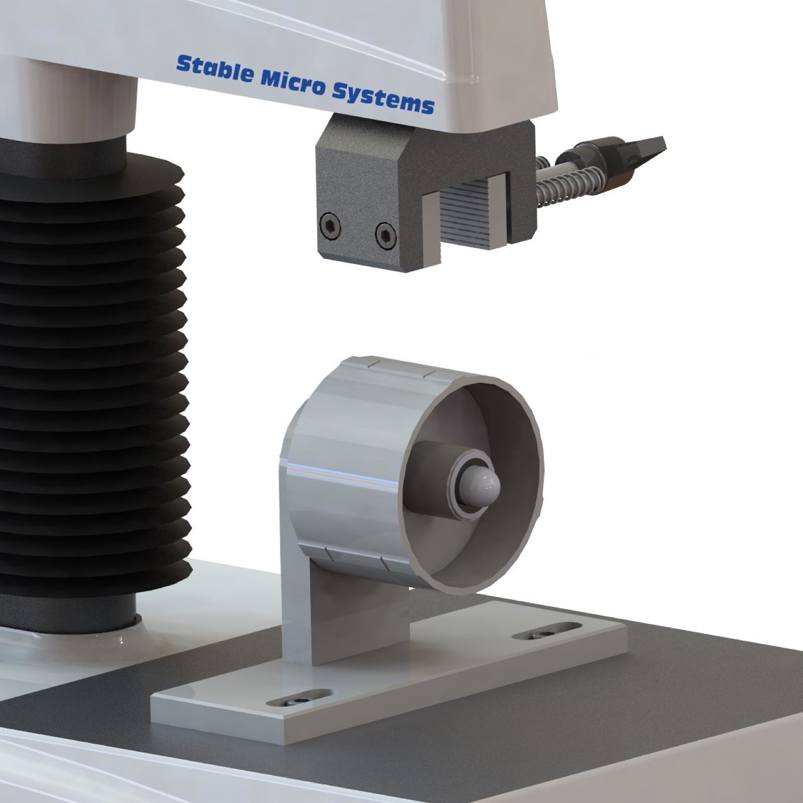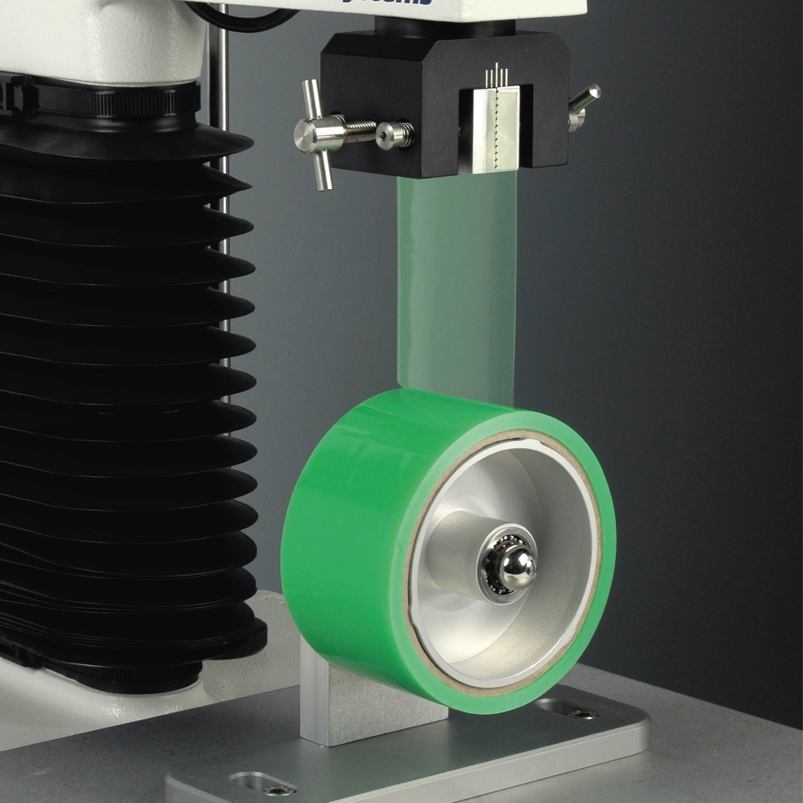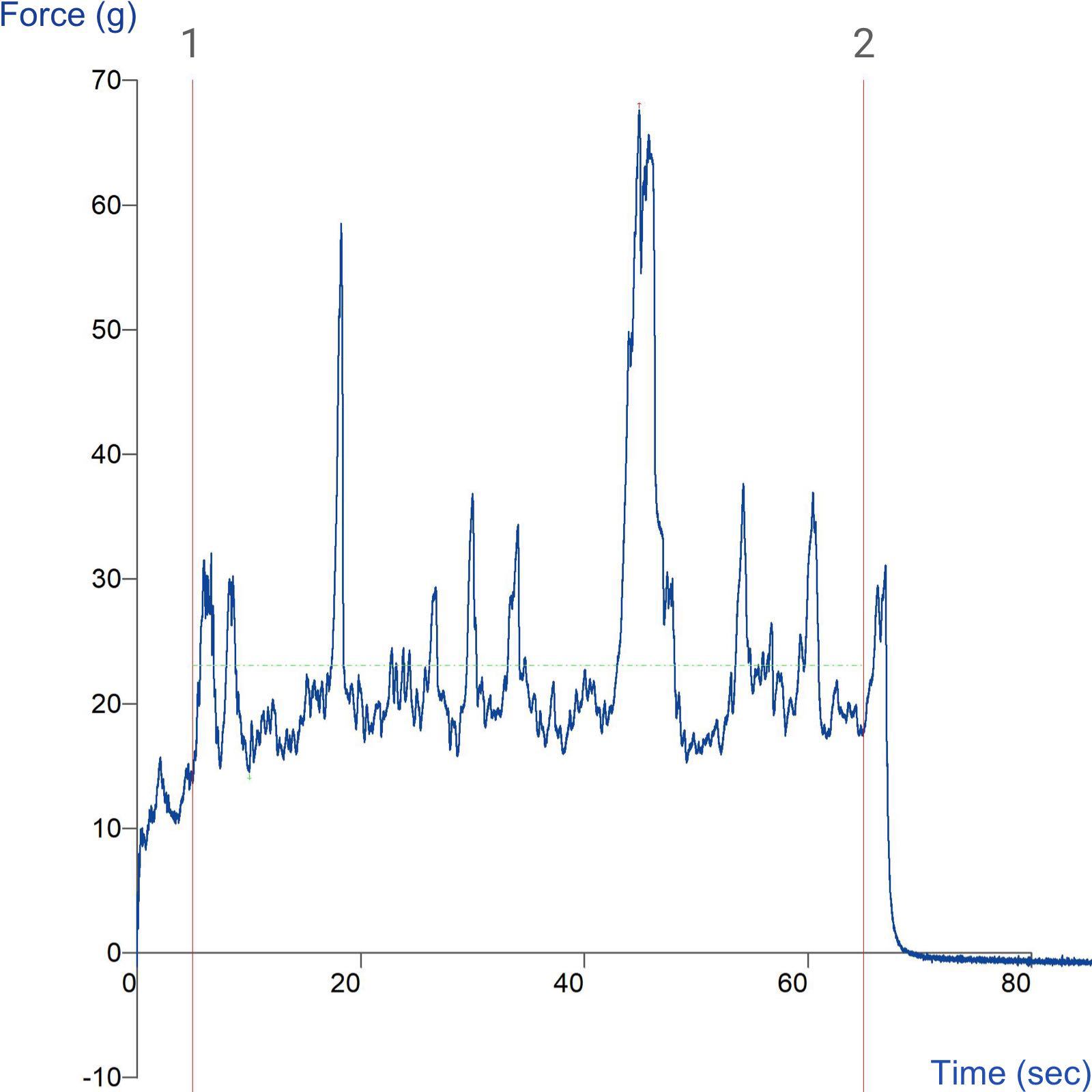Product overview
Unwind adhesion is a quantitative measure of the degree of ease or difficulty in unwinding a roll of tape.
This rig is designed to accommodate a roll of tape to allow the measurement of force required to adhesive tape from the roll. This attachment consists of a spool/mandrel with heavy duty ball bearing without appreciable friction, which is mounted to the test platform. A standard tensile grip secures the loose end of the tape reel and the adhesive strength is measured as the grip tries to peel the tape from the reel.
This attachment is required for the measurement of unwind adhesion according to:
AFERA 4013: Unwind adhesion of adhesive tape at low speed (1944) (as issued by AFERA in September 1979 and later revised in September 1989). After 25mm peeling, the minimum, maximum and arithmetic mean (i.e. average) of 5 readings of unwinding speed in Newtons per centimetre of width rounded to the nearest Newton are recorded.
PSTC 8: Unwind Force of Pressure Sensitive tape (as issued by PSTC in September 1955 and most recently revised in June 2000). The maximum unwind adhesion value in pounds per inch width to the nearest 0.1lb, or other suitable unit, is recorded. If other than 1" widths are tested, 1" values are found as the result of dividing the observed value by the specimen width.
These standard methods apply to pressure sensitive adhesive tapes and are designed to measure the force required to unwind a roll of adhesive tape at low speed under standard test conditions.
How does the Tape Unwinding Rig work?
Ideal sample form
Material on a roll that can be mounted centrally and its end gripped by an upper attachment which will provide the peeling action.
Benefits and limitations
- Continuous peeling within instrument test height
- Peel distance limited to height of instrument
Technical information
Installation
Full installation instructions are provided within the Education Zone of the latest Exponent/Connect software version and on the technical information sheet accompanying this product.
Chemical compatibility
Stable Micro Systems probes and attachments are commonly made from four materials: anodised aluminium (AA6082 T6), stainless steel (316 T), Delrin (acetyl copolymer) and Perspex (polycarbonate).
In general use, probes and attachments made from these materials will be suitable for testing food products and inert non-food materials.
The four materials listed above are not universally resistant to all types of chemicals and as such the compatibility of the probe/attachment material with the product (to be tested) must be established to prevent damage to the probes and attachments. If the compatibility of the product with the probe is unknown to the customer then the chemical information about the product (Material Safety Data Sheet or Product Data Sheet) should be submitted to Stable Micro Systems. Stable Micro Systems will then assess the suitability of the probe/attachment material for use with the product and advise accordingly. If this advice is not sought then Stable Micro Systems will not accept liability for probes/attachments damaged by chemical attack from the product being tested.
Cleaning and maintenance
All probes and attachments may be cleaned in warm (or hand hot) water using a mild detergent. A soft brush may be used but abrasive cleaning aids should be avoided. Stable Micro Systems products should not be microwaved or cleaned in a dishwasher.
Screw threads should be lightly lubricated after drying using a light lubricant, e.g. petroleum jelly, mineral oil. This will aid the fitting and unscrewing of the item. Each component of a probe or attachment should be wrapped separately when stored, to avoid scratching or chipping. This will safeguard against any unnecessary damage to the accessory.



